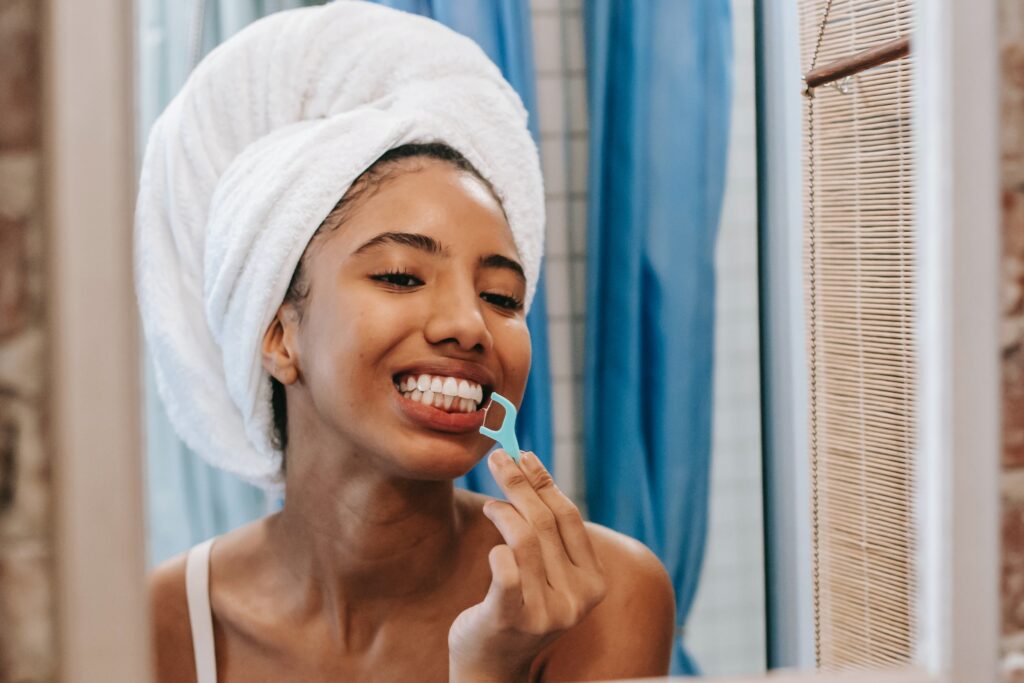Flossing is an essential part of your oral hygiene routine. Flossing helps remove food particles and plaque that can build up between your teeth, in areas that brushing can’t reach. There are several different ways to floss, each with their own pros and cons. In this article, we’ll compare three methods of flossing: string dental floss, floss picks, and water picks.
String Floss
String floss is what most people think of when they think of dental floss. This type of floss is cheap and readily available everywhere – you might even receive some free samples of this from your dentist after a visit. Using string floss properly takes good technique and a little practice.
String floss is a good choice for flossing if you want an inexpensive solution that’s readily available, and you don’t mind practicing your floss technique to get the best results.
Pros:
- Portable
- Inexpensive
- Effective
- Widely available
Cons:
- Requires proper technique to be fully effective
- Creates waste
Floss Picks
Floss picks use a small bit of string floss on a plastic frame. Many floss picks also have a toothpick point on one end to help with stubborn bits of debris stuck in your teeth. Using a floss pick is similar to using string floss, but the plastic frame takes out a few of the preparation steps. The frame also helps you reach into your back teeth more easily.
One drawback to floss picks is the expense. They must be purchased in bulk packs, which are more costly than buying reels of string floss. The plastic picks also create a lot of extra waste.
Floss picks are a good choice if you’re looking for a relatively inexpensive solution, but you can’t get the hang of proper technique for string floss.
Pros:
- Easier to use than string floss
- Easier to reach back teeth
- Toothpick point for stubborn debris
- Convenience
Cons:
- More expensive than string floss
- Creates plastic waste
Water Picks
Water picks are an increasingly popular choice for flossers. These devices use an electric pump to move water from a tank to a toothbrush-like device. This creates an intense stream of water that can flush debris from in between teeth. Water flosser fans tend to like the ease of using these devices in favor of string-based floss options. However, a water flosser is a more expensive commitment than other options. A good water flosser usually costs around $50-$100.
Pros:
- Effective
- Easy to use
- Adjustable settings for varying sensitivity
- Waste-free
Cons:
- Expensive up-front cost
- Not as thorough as string floss
Conclusion
There’s no single answer to which flossing technique is best – it’s a matter that’s up to personal preference plus advice from your dentist. This article should give you a good overview of what your options are so that you can make your own choice. The most important thing is that you include flossing as a regular part of your dental hygiene routine. Happy flossing!

